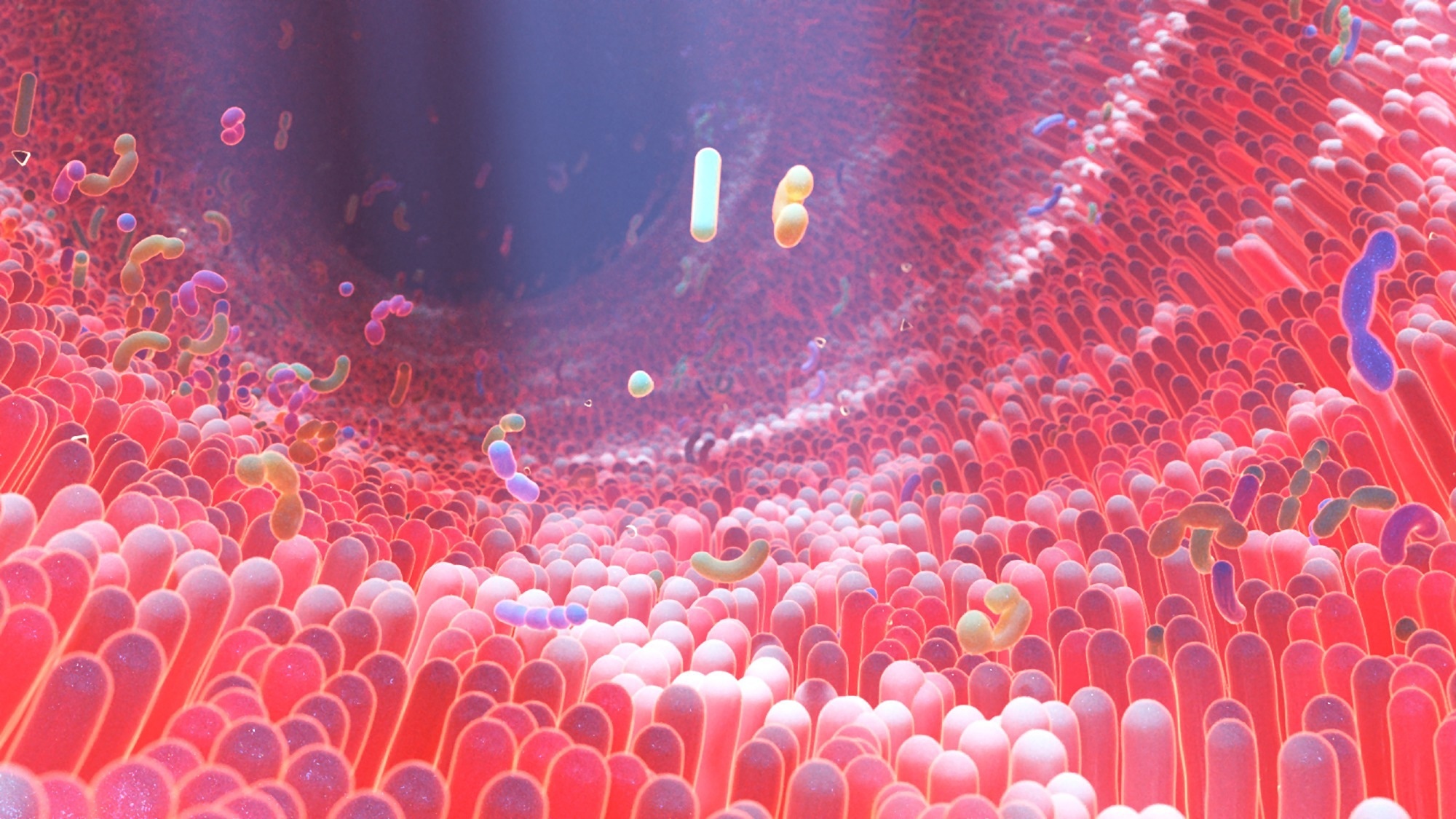In a recent study published in Medicine in Microecology, researchers reviewed how dietary fibers modulate the composition and function of gut microbiota.
 Study: The gut microbiome: linking dietary fiber to inflammatory diseases. Image Credit: Alpha Tauri 3D Graphics/Shutterstock
Study: The gut microbiome: linking dietary fiber to inflammatory diseases. Image Credit: Alpha Tauri 3D Graphics/Shutterstock
Diet is considered an important factor in shaping the microbiome of the human gut. People consume less dietary fiber due to the rise of Western diets (high in simple carbohydrates and fats and low in fiber) associated with industrialization. These diets may impact the gut microbial composition and negatively affect the host’s physiology, metabolism, and immunity.
Dietary fibers are complex polymeric carbohydrates that cannot be metabolized by enzymes encoded by the human genome and are metabolized by gut microbes through anaerobic fermentation. Epidemiologic studies suggest an increased risk of chronic inflammatory diseases associated with a lower dietary fiber intake. The gut microbiome regulates host metabolism and immune homeostasis.
Different dietary fibers and their metabolic products, such as short-chain fatty acids (SCFAs), can profoundly impact hosts and modulate gut microbial composition. Therefore, exploring how dietary fibers regulate host microbial communities can allow for targeted therapeutic interventions. As such, in the present study, the authors illustrate the effects of dietary fiber interventions on the gut microbiome and inflammatory diseases.
Dietary fibers influence gut microbiota
One study reported that consumption of chicory-derived inulin for a short period increased the proportion of Anaerostipes and Bifidobacterium in healthy adults with mild constipation. Studies have uncovered that inulin and pectin promote the growth of distinct microbial communities when supplied as a sole energy source to colonic microbes in vitro.
A long-term low-fiber diet can progressively diminish microbial diversity in mice over several generations, which is unrecoverable even after reinstating a high-fiber diet.
Notwithstanding the multiple studies investigating the effects of dietary fibers on gut microbial composition in animal models, there are limited studies in humans.
Rural populations and those from less-developed countries consume more fiber than urban/industrialized populations. A study in the United States concluded that a plant-based fiber-rich diet increased the proportion of Roseburia, Prevotella, Eubacterium, and Ruminococcus, which metabolize plant polysaccharides.
A meta-analysis reported that dietary fiber intervention increased the fecal abundance of Lactobacillus and Bifidobacterium spp., but the alpha diversity was unchanged. Consuming vegetables and whole grains was found to augment microbial diversity in pregnant individuals who were overweight or obese.
Dietary fiber breakdown is regulated by carbohydrate-active enzymes (CAZymes), including carbohydrate esterases (CEs) and glycoside hydrolases (GHs), polysaccharide lyases (PLs), and auxiliary activities. Microbial genes encoding CAZymes govern the ability of fiber utilization. Bacteroidetes are the most common fiber-degrading bacteria, with 18 CEs, 17 PLs, and 269 GHs. In vitro studies suggest that bacteria show distinct preferences for the same dietary fiber.
Effects of dietary fiber on inflammatory diseases
One study observed significantly lower C-reactive protein (CRP) levels in healthy adult males taking dietary fiber. Two Swedish studies indicated that the Mediterranean diet was associated with a reduced risk of late-onset Crohn’s disease, a subtype of inflammatory bowel disease (IBD). In contrast, poor adherence to the Mediterranean diet elevated the risk by 12%.
The Mediterranean diet improves symptoms and lowers IBD risk and mortality. Dietary fibers can protect the intestinal barrier; for instance, a study found that a high-fiber diet protected mice from colitis. Fiber deprivation can deplete the mucus layer and disrupt the intestinal wall, increasing its permeability.
High-fiber diets have been shown to reduce the secretion of pro-inflammatory cytokines and chemokines in rheumatoid arthritis (RA) patients. In addition, RA patients taking a vegan diet had significantly less swollen and tender joints, pain, low CRP levels, and erythrocyte sedimentation rate. The mean disease activity score decreased in RA patients after a week of Mediterranean diet consumption.
Clinical applications of dietary fiber
Prebiotics represent one of the key approaches to addressing gut microbial dysbiosis. Dietary interventions may be classified as low-fiber, high-fiber, or supplemental fiber. High-fiber dietary interventions significantly increase gut microbial diversity relative to supplemental fiber interventions. A study demonstrated that a Mediterranean-inspired diet decreased inflammatory markers and normalized gut microbiota in patients with Crohn’s disease.
The International Organization for the study of IBDs recommends the intake of vegetables and fruits in Crohn’s disease patients. According to a systematic review, patients with uncomplicated diverticulitis should follow a liberalized and high-fiber diet; nevertheless, there is limited evidence for the benefits of dietary fiber in preventing diverticulitis.
Concluding remarks
Taken together, numerous studies highlight the beneficial outcomes of high-fiber dietary interventions. Thus, dietary fiber interventions may serve as a tool to regulate gut microbiota. Future research should focus on how personalized diets modulate host responses and the efficacy of small-molecule therapies against specific microbial pathways for precision medicine.